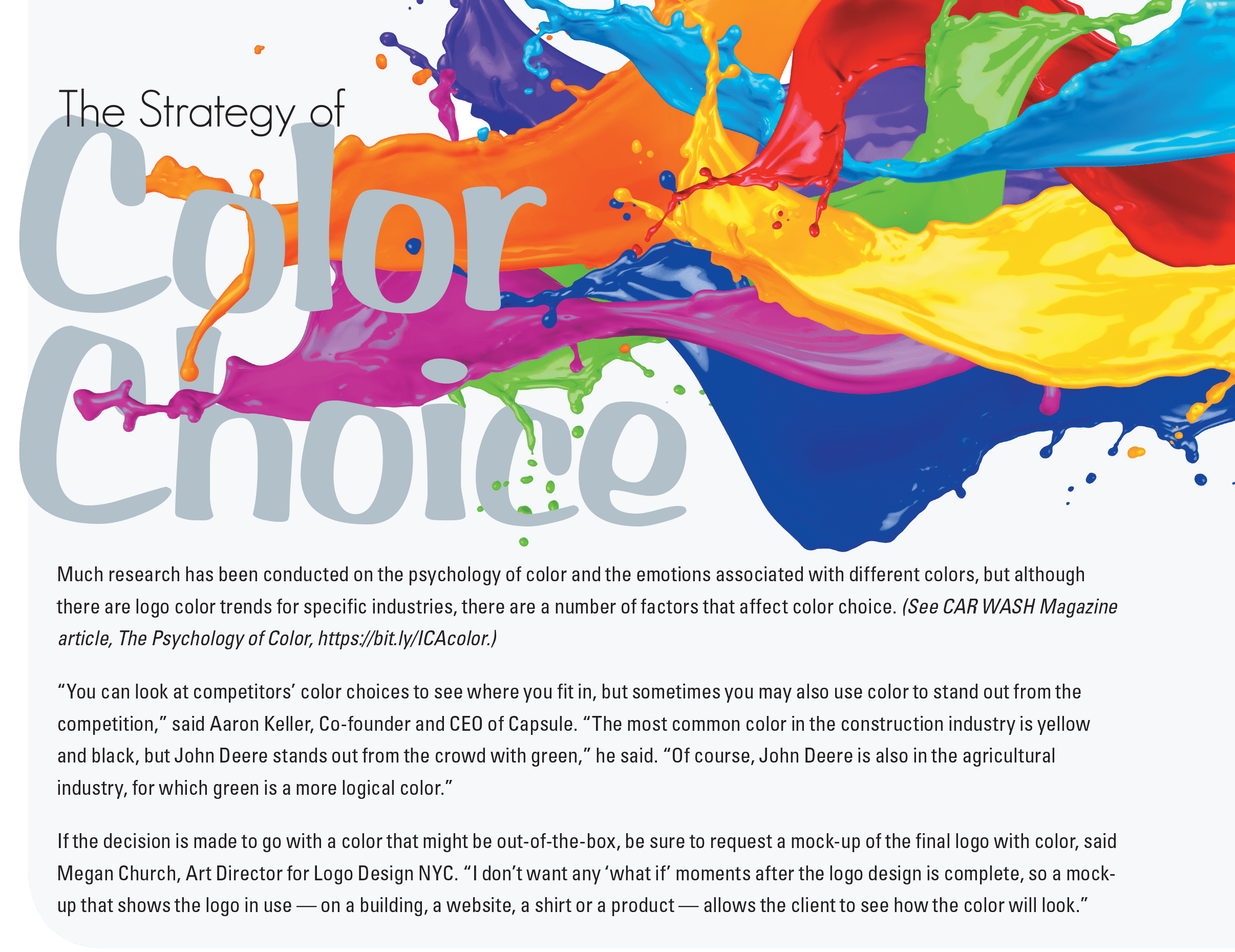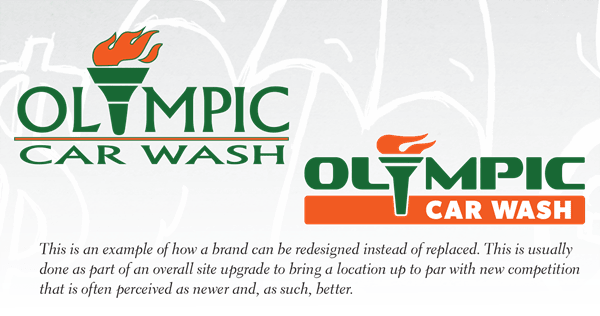
Love Your Logo!
December 2, 2021
7 minute ReadBY SHERYL S. JACKSON
— Paul Rand”
This quote by Paul Rand, the creator of iconic logos for IBM, UPS, Westinghouse Electric Company and more, points out that a logo is an ambassador, not a salesman.
This means that business owners should think of logos as a tool that reminds customers of previous positive interactions with a company or that promises a positive experience for new customers.
It is important to remember that there is a difference between brand and logo. Branding is a strategy used to help consumers quickly identify products or services of a specific company and to inspire consumers to choose one company’s products over a competitor’s products or services. Some of the tools used to create a brand presence in the market include the brand’s definition, which includes values and promise; positioning statement, identity, which includes the logo; advertising and communications; customer experience and service; and pricing.
While advertising campaigns and messages can be changed frequently, the logo should be the image that — while occasionally updated — remains a constant, consistent image to tie branding messages and customer experiences together.
“I like to start the design process by finding out about the business, such as why the owner started it, their values and business philosophy, and what makes their company distinct from others,” said Aaron Keller, Co-founder and CEO of Capsule. “If properly designed, the logo represents your business and your brand everywhere.”

Understanding the relationship between the business plan and the local customer base is also important, said Tom Dodson, Owner of Dodson Marketing and Design. “If the primary focus of the car wash is speed because it is in a busy area with people who wash their cars on the way to or from work, or at lunchtime, then the logo should convey speed and efficiency,” he said. “On the other hand, in an area where speed is less of a concern, the logo should reflect different values that appeal to those guests.”
Dodson recommends that business owners write a description of their value proposition and the message they want to convey to customers. “Throughout the logo design process, the written description can be used to keep owners on track as they evaluate designs,” he said.
Small business owners may be inclined to help others start their business or gain valuable experience for their career, but it is important to avoid hiring hiring the recently graduated graphic designer who is your neighbor’s child to create your logo. While the young person may be talented, more goes into the design of an effective business logo than artistic ability — knowledge of the industry, understanding the different ways to use a logo, familiarity with trademark rules, and experience with other businesses.
“I have created some wonderful logos that started as drawings by a child or loved one of the business owner, but I knew how to convert the image to the vector files required to make the logo scalable to any size from a two-inch embroidered logo on a shirt to a 12-foot sign on a building,” said Mel Ohlinger, Owner of Rule of Design. “The final design should have a professional look that reflects well on the business, not an amateur look that doesn’t convey the quality of a car wash service.”
Education is a key component of the logo design process, said Joe Jensen, Managing Director, and Megan Church, Art Director, for Logo Design NYC. “We ask clients to tell us what they like or don’t like about other companies’ logos, which helps us focus our efforts, then we talk about what they want for their logo,” Church said. “Not everyone uses logos in the same way, so we explain how a logo might work well on a website, but not on a tube of lipstick, and we show examples of how some logos look messy when they are small.”
“A good logo design should also allow the logo to be pulled apart to provide flexibility in its use,” Jensen said. “Most of our clients trademark every part of the logo — the brand mark, company name and the tagline as well as the full logo.”
When designing a logo, the best approach is to keep it simple. “If you or your audience has to take time to interpret the logo because it is complicated, then it is not a good design,” Jensen said.
 When searching for a designer to create a logo, be wary of online services that offer logo design for low prices, Keller said. “These services often re-draw an existing logo with minor changes to fit your request, but if the original logo owner has trademarked the logo, or any part of it, it will cost you a lot for trademark infringement,” he said. “Before using a logo, I recommend a trademark search and an attorney’s opinion, then you can register your logo and use it without worrying about infringement.” Some of Keller’s clients also make sure they retain sketches of the logo throughout the design process as documentation, he said.
When searching for a designer to create a logo, be wary of online services that offer logo design for low prices, Keller said. “These services often re-draw an existing logo with minor changes to fit your request, but if the original logo owner has trademarked the logo, or any part of it, it will cost you a lot for trademark infringement,” he said. “Before using a logo, I recommend a trademark search and an attorney’s opinion, then you can register your logo and use it without worrying about infringement.” Some of Keller’s clients also make sure they retain sketches of the logo throughout the design process as documentation, he said.
While designing a logo is always part of the start-up of a new business, logos are usually evaluated in re-branding campaigns, too. “There is no need to completely re-do a logo if a company is simply updating an established brand to bring it up to par with new competition, which is often perceived as newer and better,” Dodson said. In fact, it is important to make sure customers still recognize you as the same reliable business they’ve always known, with an updated look that promises you are keeping up with the competition. “For example, Olympic Car Wash is a 30-plus-year-old, very successful brand. Simply updating their logo — in coordination with other on-site graphics and marketing — allowed them to present a new look while leveraging the benefits of the familiar design elements.”
Another key to success in redesigning a logo for small business owners is to appoint a small team, maybe one to two people, to work with the designer, said Ohlinger “You will never have a logo that pleases everyone. So one or two trusted people who understand the goals and values of the business can be involved in the process, make decisions, then present it to others as the new logo.”
The most successful logos create a visceral reaction — a connection between a customer and a business, Keller said. The most difficult thing for business owners to remember, however, is that the logo is not created with them as the audience. “We’ll have business owners say that they don’t like a logo when they see a concept, but the reaction is based on their perspective,” he said. “That’s when we remind them that it was created for their customers and potential customers. Then we ask, ‘Would your audience like this logo?’”
Anatomy of a Rebranding
Not everyone who goes through a rebranding effort describes the process as “fun” but Max Pulcini, Director of Marketing and Communications for EverWash, does. “We spend a lot of time working with our car wash partners to make sure that their brand is clearly identified and displayed on our app, signage and any website or social content we create for them, so it was a great experience to focus on our own brand, logo and identity for a change.”
The five-year-old company provides membership sales, subscription management and marketing support to car wash owners for their car wash club programs but is expanding their services and wanted their logo to reflect that. “We wanted to brand ourselves as a technology company for the car wash industry and its customers, as opposed to a company that owns or manages our own car washes,” Pulcini said. “Our new look and feel better reflects the wide range of services we offer and provides opportunities to grow our services.”
The company had always used the phrase “Happy Washing” in communications and on the app, so a marketing consultant recommended using the phrase as a tagline that describes the experience offered by car wash partners to consumers, in addition to the value offered by EverWash to its car wash partners.
The existing logo was dated so it was updated to a more modern look, with a smile placed on the car to denote “the happy feeling you have after getting your car washed,” Pulcini said. Different versions of the logo icon with and without the tag line were produced for use on the app, in marketing materials, in social media channels and for on-site signage for car washes. “The logo can also be easily animated for future uses,” he said.
But, with 600 car wash partners all using the old logo, it will take some time for the conversion and the new signage to be created and installed. “One lesson we learned is that rebranding doesn’t stop with the introduction of a new logo,” Pulcini said.








